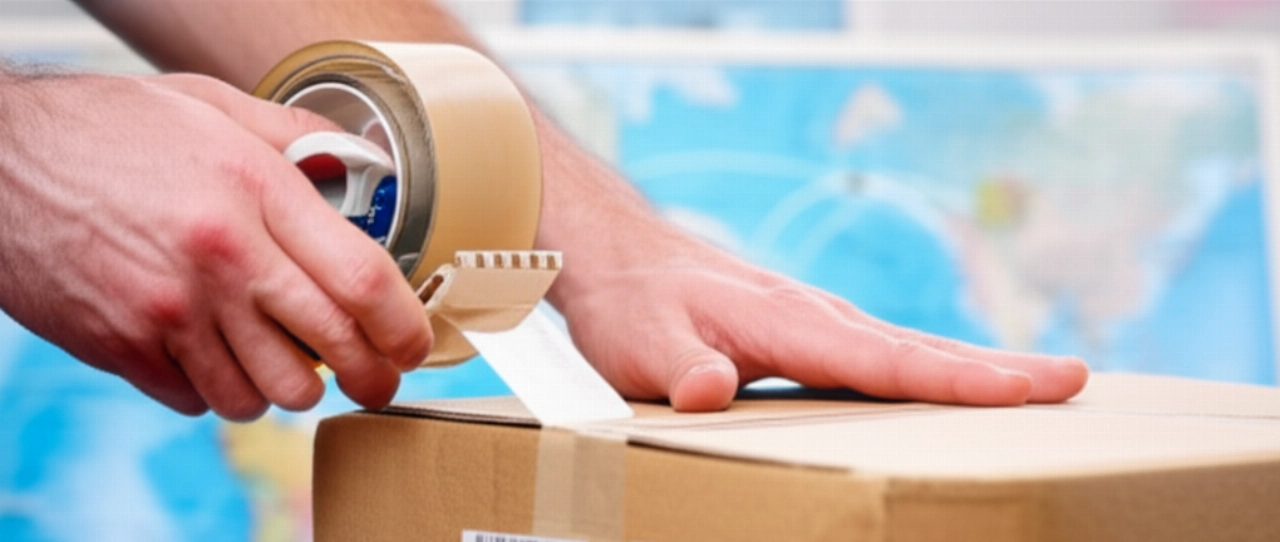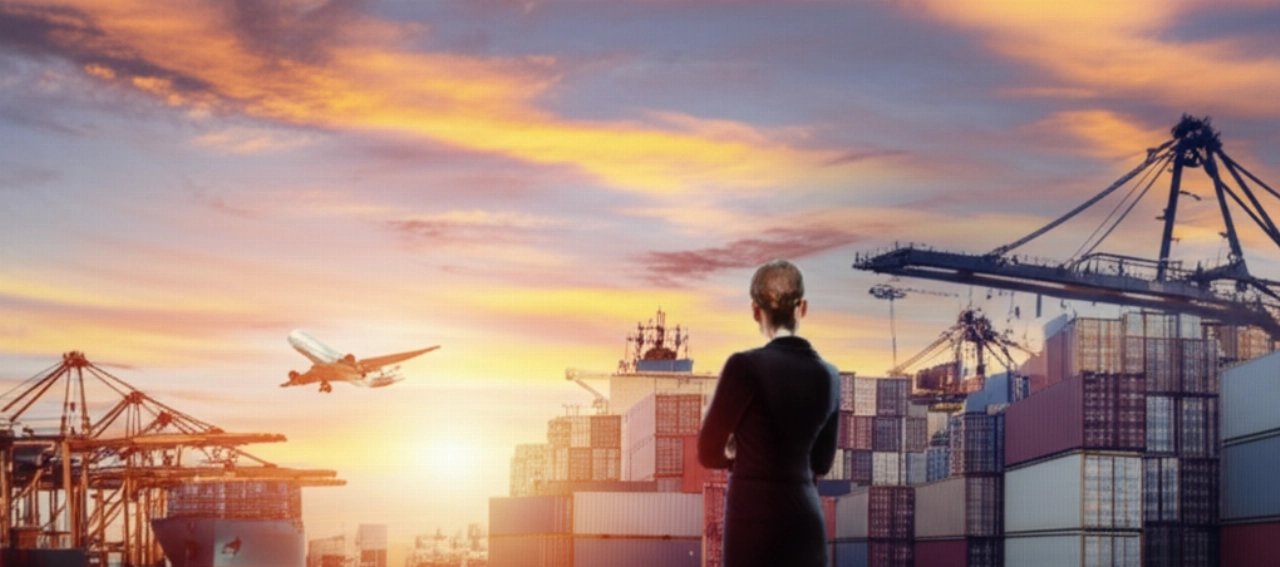Is the American dream calling you, or perhaps your business is expanding overseas? Whatever your need, the thought of shipping to the United States can seem like a titanic undertaking, full of uncertainties and hidden costs.
Understanding customs regulations, delivery times, and especially the real cost for your transport to the USA can turn into a real nightmare. The fear that your valuable goods, whether industrial machinery or a sentimental item, might not arrive intact or get lost in the bureaucratic labyrinth is more than legitimate.
In this guide, we won't just give you answers. We will provide you with the complete map to navigate the transatlantic shipping process with clarity and confidence. We will show you how to transform complexity into a simple and secure solution. Let's begin.

Beyond the Ocean: Why Shipping to the United States with an Expert Partner is Your Guarantee of Success
When it comes to shipping to the United States, you're not just moving an item from point A to point B. You're entrusting a piece of your business or your life to a journey that crosses an ocean, borders, and complex regulations. That's why choosing the right partner is an investment, not an expense.
- Safety and Integrity: Your goods, whether fragile or bulky, must arrive intact. An expert partner knows the best practices for packaging, securing, and handling for international transport.
- Cost Transparency: Forget "too good to be true" quotes. A professional offers you a clear cost, including customs duties, taxes, and surcharges, with no hidden surprises.
- Customs Compliance: US customs laws are strict. An expert guides you through the necessary documentation (such as the declaration of value or the bill of lading) and procedures, avoiding delays or penalties.
- Efficiency and Punctuality: Time is money. A reliable service guarantees realistic transit times and adherence to deadlines, whether you choose air freight for urgency or sea freight for voluminous cargo.
Our promise is: "Shipping to the United States is not just a journey for your goods; it's a process that requires precision, knowledge of regulations, and a partner who guarantees peace of mind from pickup to delivery, without surprises."

The Route to Clarity: Key Factors Determining Cost and Time for Shipping to the United States
The cost of an international shipment is not a mystery, but the result of several interconnected factors. Understanding them allows you to get an accurate quote and plan your shipment to the United States effectively.
1. Weight and Volume of Goods
For both air and sea transport, the cost is calculated based on the greater of the actual weight and the volumetric weight. It is essential to accurately measure and weigh your goods to avoid unexpected surcharges.
2. Type of Goods and Packaging
Special goods (dangerous, fragile, valuable) require specific packaging (e.g., wooden crates, metal cages) and particular procedures, which can affect the cost. Good packaging is the first defense against damage.
3. Mode of Transport: Air vs. Sea
- Air Freight: Faster (a few days), ideal for urgent or high-value goods, but with higher costs and weight/volume limitations.
- Sea Freight: More economical, suitable for voluminous or non-urgent cargo (weeks of transit). You can choose between FCL (Full Container Load) if you have enough cargo to fill an entire container, or LCL (Less than Container Load), also known as groupage, if your goods occupy only part of the container.
4. Additional Services
Home pickup, floor delivery, "all-risks" insurance, customs broker services, temporary storage: each extra service has a cost, but it can greatly simplify your life and increase security.
5. Customs Duties and Taxes
These costs are not determined by the carrier, but by US regulations. They depend on the type of goods, their value, and the chosen Incoterms (which define who pays what). An expert partner will help you estimate and manage them.

The Pitfalls of Overseas Travel: Common Mistakes and How to Avoid Them When Shipping to the USA
The desire to save money is understandable, but when it comes to shipping to the United States, apparent savings can turn into a much higher cost. Here are the mistakes to avoid:
1. Underestimating Customs Bureaucracy
Failing to correctly complete the declaration of value, or not providing all required documents (e.g., import licenses for certain goods), can cause customs holds, significant delays, and hefty fines. US customs is extremely strict.
2. Relying on "Too Good to Be True" Quotes
An excessively low price often hides additional costs for fuel, restricted traffic zones (ZTL), surcharges for incorrectly declared weight/volume, or excludes essential services like insurance or customs clearance. Always ask for a detailed and "all-inclusive" quote.
3. Neglecting Adequate Packaging
An international shipment is subject to greater stress. Insufficient packaging is the main cause of damage to goods. Do not skimp on quality materials and adequate protection techniques. Remember that insurance may not cover damages resulting from inadequate packaging.
4. Not Understanding Incoterms
Incoterms define the responsibilities between seller and buyer at each stage of transport. Not knowing them means risking paying unforeseen costs or not being covered in case of problems. Always ask your carrier for clarification.
At TrasportoMerci.net, we guide you step by step, transforming these potential problems into a clear and secure process.
The TrasportoMerci.net Method: Your Borderless Solution for Shipping to the United States
The difference between a simple carrier and a logistics partner lies in the ability to anticipate problems, offer tailored solutions, and ensure maximum transparency. This is the core of our method when it comes to shipping to the United States.
- Personalized Consultation: Every shipment is unique. We evaluate your specific needs (B2C or B2B, type of goods, urgency) to offer you the most efficient and convenient solution.
- Reliable Partner Network: We collaborate only with the best carriers and customs brokers, selected for their reliability and expertise in international transport.
- Total Transparency: Our quote is clear and detailed, with no hidden costs. We explain every expense item, including duties and taxes, to give you maximum peace of mind.
- Complete Document Management: We assist you in preparing all necessary documents for customs clearance, from the declaration of value to the bill of lading, ensuring compliance with US regulations.
- Tracking and Constant Support: You can monitor your shipment at every stage of the journey. Our team is always available to answer your questions and provide updates.
With TrasportoMerci.net, your goods are not just cargo, but a priority. We take care of every detail, from bureaucracy to logistics, to help you achieve your overseas goal with maximum peace of mind.
Frequently Asked Questions about Shipping to the United States
How long does delivery to the USA take?
Times vary depending on the mode of transport. Air freight generally takes 3-7 business days. Sea freight, on the other hand, can take 3 to 6 weeks, depending on the port of departure and arrival, and whether it is FCL or LCL (groupage).
Is my cargo insured during international transport?
Yes, we offer various insurance options. In addition to basic carrier insurance (which has compensation limits), we always recommend an "all-risks" insurance to cover the actual value of your goods against damage, theft, or loss during the entire journey, from departure to arrival in the United States.
What documents are needed to ship to the United States?
The main documents include the proforma or commercial invoice, the declaration of value, the bill of lading (Bill of Lading) for sea freight or the air waybill (AWB) for air freight, and sometimes specific certificates (e.g., origin, health) depending on the goods. We will guide you step by step in preparing everything necessary for US customs.
How should I pack goods for a transatlantic shipment?
Packaging is crucial. Use robust materials, fill empty spaces, protect corners, and seal carefully. For fragile or valuable items, we recommend wooden crates or metal cages. The goods must be able to withstand multiple handling and the long journey. If you have any doubts, our team can provide specific guidance or suggest professional packaging services.
Can I track my shipment to the United States?
Absolutely. We will provide you with a tracking number that will allow you to monitor the status of your shipment at every stage, from pickup in Italy to final delivery in the United States. You will always have control over the journey of your goods.
Now you have a clear vision of what it means to ship to the United States safely and transparently, without anxiety or surprises. Perhaps you think such a comprehensive service is too expensive or complicated to organize. In reality, the biggest cost is uncertainty and the risk of problems. A reliable partner saves you time, money, and stress, transforming shipping into a competitive advantage for your business or peace of mind for your life.
Don't let bureaucracy or fear of hidden costs hinder your projects. Your goods deserve a safe journey, and you deserve peace of mind. The first step costs nothing: it's a consultation on your specific transport needs. Click here, describe what you need to ship to the United States, and receive a clear, detailed, and no-obligation quote. Discover the tailored solution for your overseas success now.
Now that you know everything about how to ship to the United States, also discover how to complete the customs declaration of value or delve deeper into the difference between air and sea freight to choose the most suitable mode for your needs.